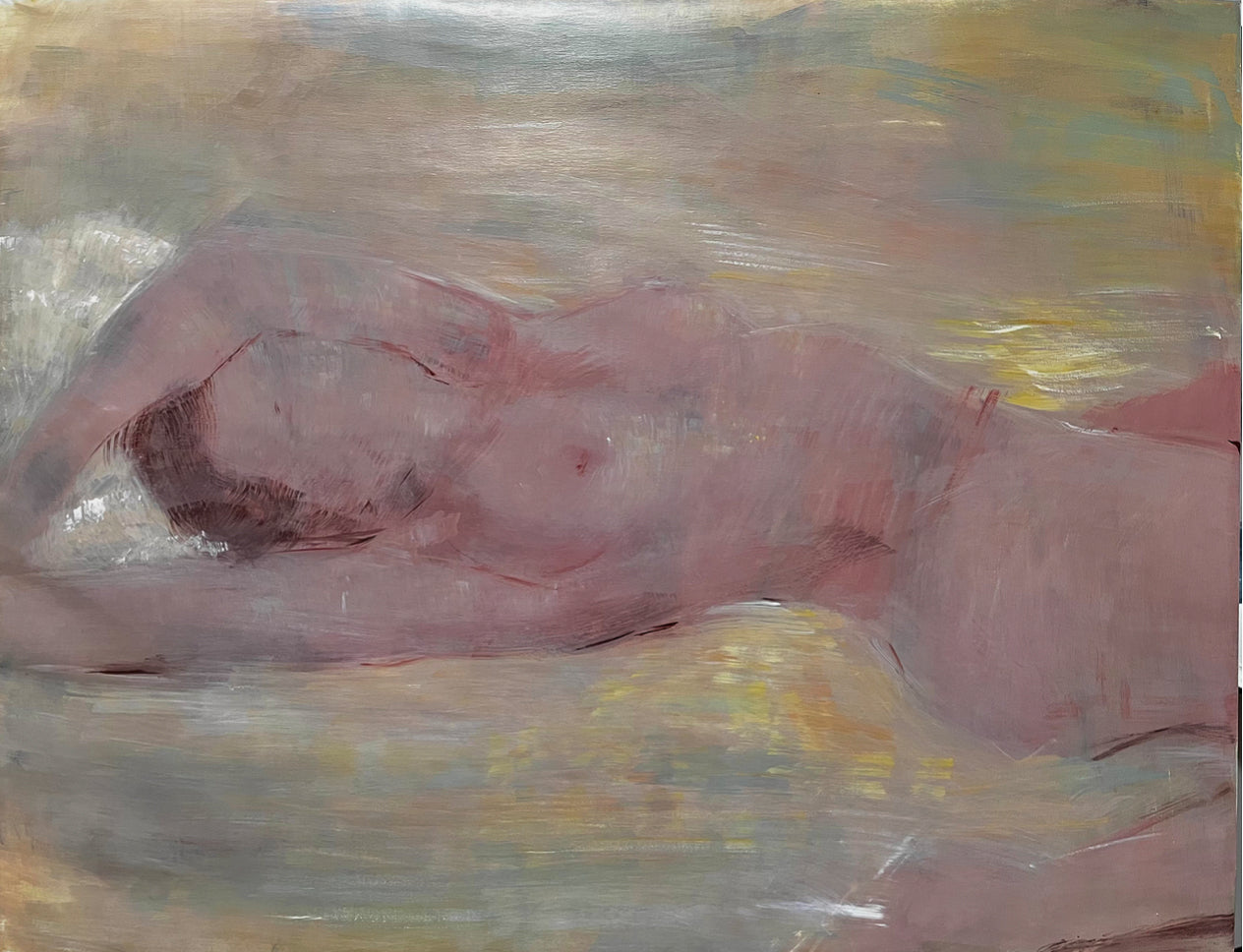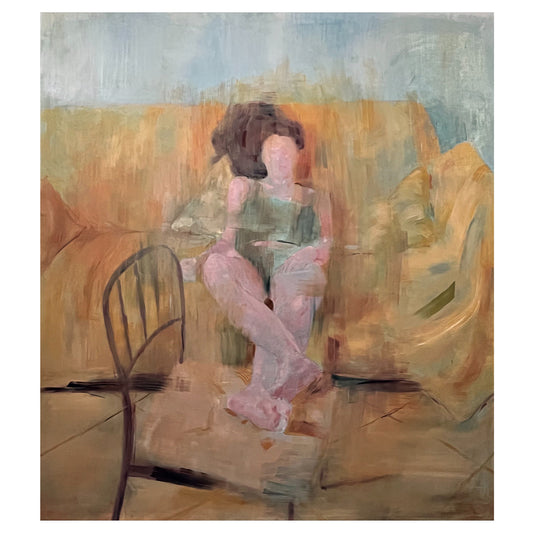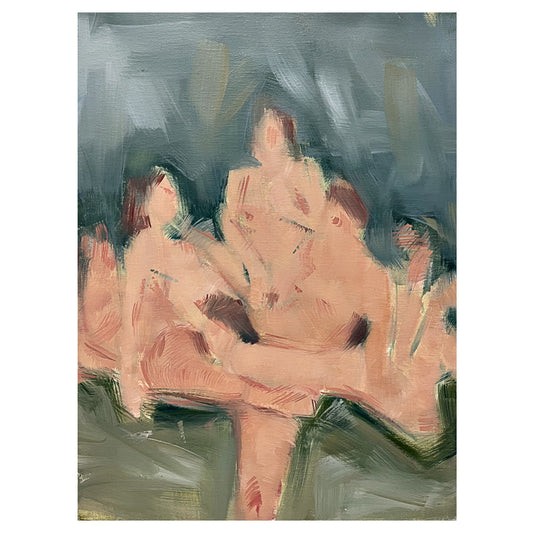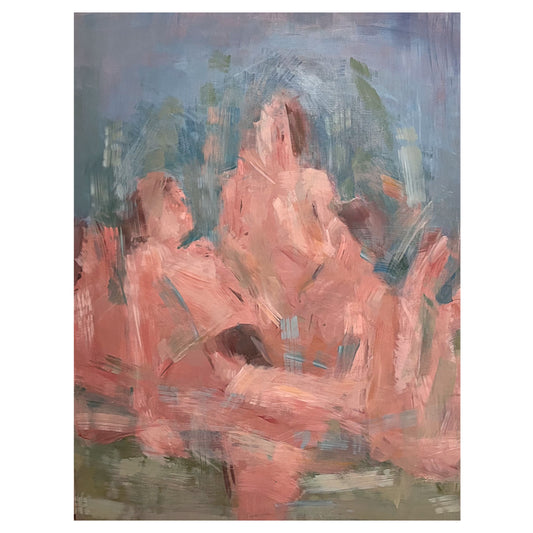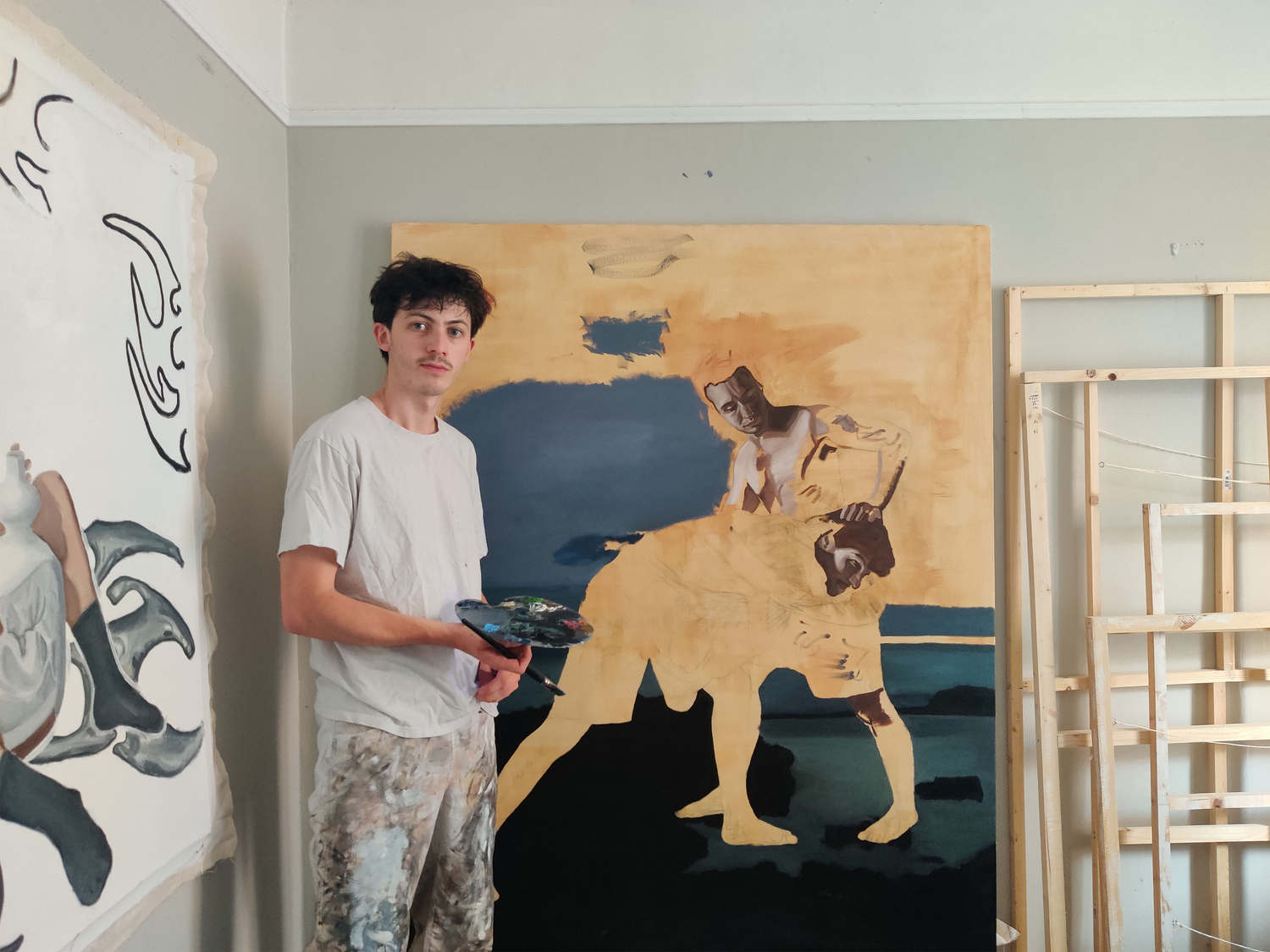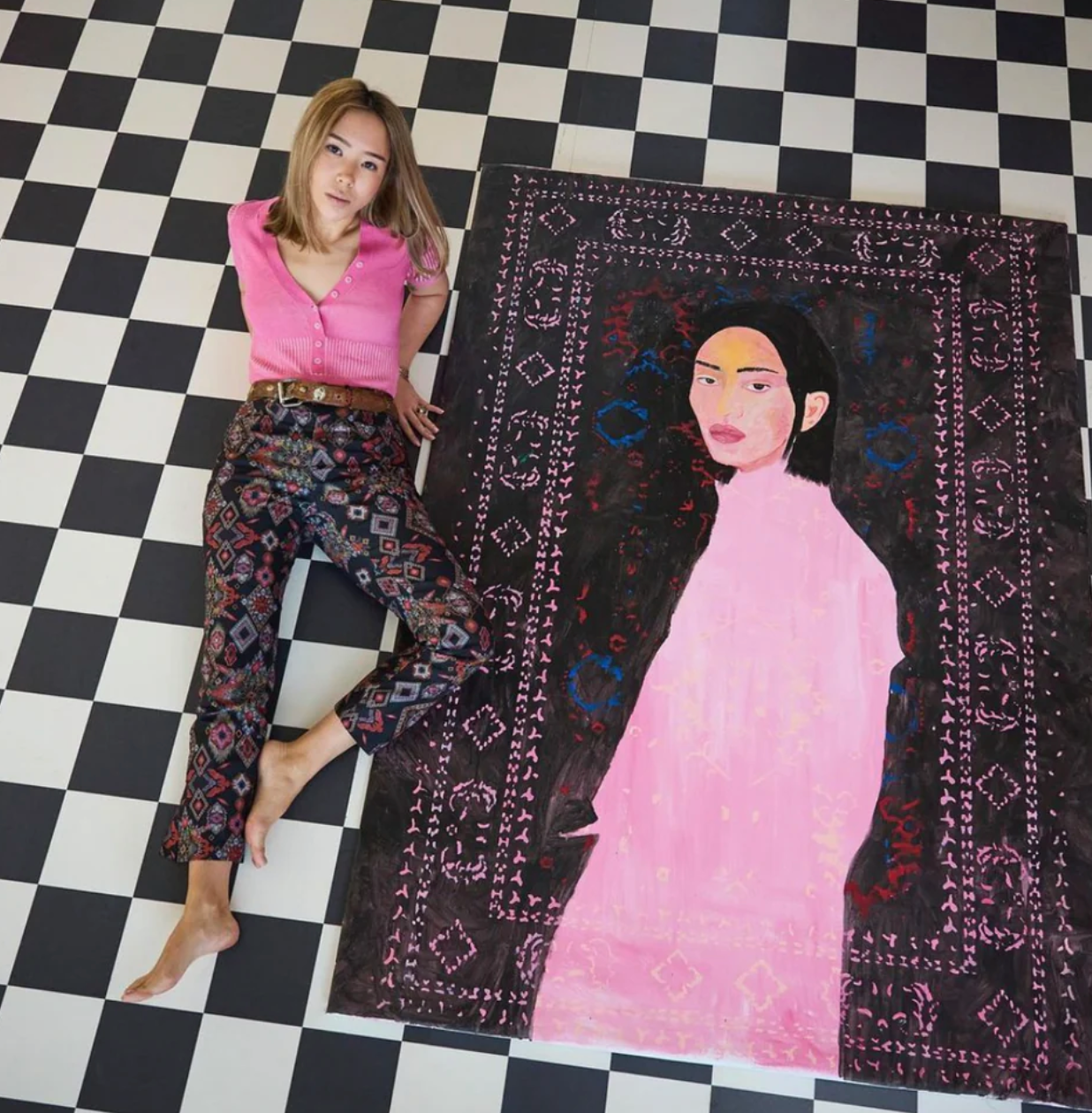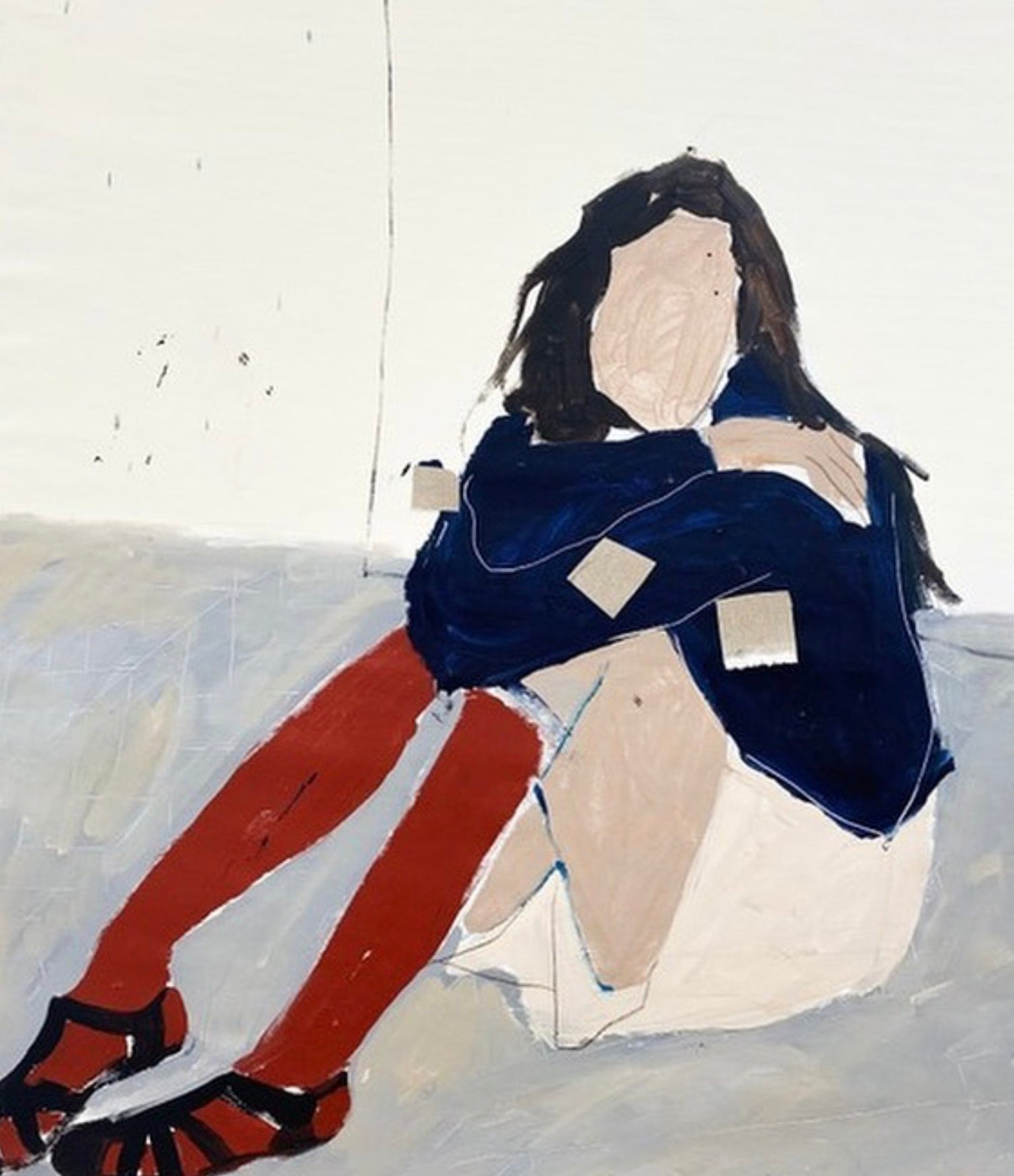-
Leo Ragno is a young artist from Puglia, who lives in Milan, a very lively and active place in the national artistic panorama and works within the prestigious Academy of Fine Arts of Brera, since 2014 a teacher of Engraving Techniques: at the same time he is a talented an artist who is becoming increasingly appreciated for his unmistakable style of rare refinement and sensitivity, even more appreciated today, when everything that is excessive, bombastic and disruptive is dominant. The resulting works are silent and discreet, tenuous, rarefied.
In Leo Ragno there is only lightness and amiability, which lead back to reality. Even cruder and deafening, because he knows how to ennoble any gesture, without judging it or underlining it. He knows how to become aware of the situation by transporting it into a reflection that stimulates memory, memories and impulses, but inevitably drags it into a metaphysical dimension, compared to the reality he represents in the work. I think it is interesting to discover the subsequent evolution of the artist: creativity must be left free to be enjoyed if one does not want to destroy and suppress it. The evolution of a young mind is not predictable, as it sometimes takes different paths through the events of life. But for an artist it is essential to express oneself with inspiration and sincerity, even if one is moving towards complex paths. The truth of art is communicated involuntarily and must always be the artist's objective, clearly evident in his works. And here is the very interesting result, the interview with the artist:
-
How did you discover you wanted to become an artist?
I think it was a discovery that happened gradually and it's difficult for me to find a specific moment. I would say that it was almost an awareness that, as time passed, grew stronger, making me understand the possibility that painting offered to express myself.
How did you approach the art world?
My journey began in the Academy and it was there that, for the first time, I had the opportunity to meet people who had similar fixed thoughts. Since then the goal I have given myself is to be able to be in this world of art for as long as possible.
What pushed you to choose the subjects and themes?
I have always perceived in myself a propensity for the figure. Initially, to practice, I painted my family members and in a short time I understood that my research had to turn towards understanding my way of seeing people. I'm really intrigued by the "animal" aspect of people, their involuntary attitudes, social behaviors and their way of being in the world. It was truly inevitable then that they would become the main subject of my images and research.
What meanings do you want to represent in the works?
I would like for my works to be able to involve the viewer deeply in their emotions, involving them in the image and making them feel part of it. I would like to raise questions in those who look at my paintings. This is why the attempt in my works is to depict moments and images that evoke memories, episodes or faces that allow the viewer to recognize someone or something or even to recognize themselves within the work.
How much of your life is there in your works?
In my works, in some way, there is my whole life. In my case, artistic expression wants to be as sincere as possible and this leads me to declare myself through painting. It is a process, however, that I believe should be completely instinctive. As I express myself and my experience in the way I move, walk, speak, so it must happen in my painting. There is therefore no narration of mine within the images, but certainly my way of seeing things and feeling them. I declare myself by painting to the extent that I paint and work with absolute sincerity and therefore inevitably insert into the images what I feel and experience. I mean that I don't depict scenes or contents of my life, but that that is my way of seeing and feeling things, the expression of myself.
How did your painting process come about?
My pictorial process is made up of continuous construction and destruction of the image, I paint a face and then erase it and repaint it on what remains. This process continues until the image reaches the definition that satisfies me. The type of "rarefied" result is intended to be a sort of image that re-emerges from memory, not perfectly defined, evanescent, but with an identity. The image, poorly defined, forces the viewer to complete the painting with his own mental effort. By doing this he will inevitably be involved in the painting which will somehow be completed by his memory.
Which artistic movement inspires you?
If I really had to choose one, I would say Expressionism: it was the first artistic movement to involve me during my academic studies and which, in certain aspects, continues to influence me, but it is certainly not the only one. In fact, I cannot avoid mentioning Existentialism, currently I am very attracted to Abstractionism and I try to study it carefully (De Koonig, Rothko) in order to enrich my works. Generally the style I use derives from a path that starts from artists such as Giacometti, Eugène Carrière, Medardo Rosso. The liquidity of Carrière's paintings and Medardo Rosso's sculptures led me to look for something similar in my subjects. Similar discussion regarding Giacometti's works, the synthesis of the figure, the stripping of the subject, led me to reflect a lot on my approach to painting and images in general.
How do you see the world of Italian art? And the foreign one?
I seem to see a great excitement and especially in the last period an increase in quality in general. There remains, both in Italy and abroad, a certain control of the market, which unfortunately allows things (not) to work in a certain way. However, I don't like to play victim, I'm referring to the fact that it is a system that responds to market logics, which are often different from artistic ones. Perhaps it goes without saying that there is a different climate abroad, but I think it depends above all and very pragmatically on economic availability.
What do you think about Contemporary Art, the art world, critics and curators?
I note with great pleasure a return to painting and a new interest in this art form which has experienced troubled periods.
What are your future projects?
I'm working on projects in Italy and abroad, there will soon be an exhibition in Venice and a second in Milan, I can't reveal the rest yet, but it forces me to spend a lot of time in the studio, luckily.
How satisfied do you feel with the works you create?
I feel satisfied when, in a painting, I see growth, a small step forward towards the direction I pursue.
Which exhibitions do you consider most significant in your artistic life?
I believe that the most important are the ones I am about to create, but if I had to choose among those created, I would say the exhibition A Fleur de Peau in Paris, last year, at the Italian Cultural Institute, curated by Angela Ghezzi. It was an important moment of growth and satisfaction, like the 2020 Personal Il Rumore del Tempo , curated by Giulia Grassi at the "Brunitoio" in Verbania.
They were two exhibitions which, in addition to having an importance in themselves, played a crucial role in my artistic research journey. Speaking of the Paris Exhibition, I must recognize that it was an important opportunity to be able to exhibit a set of works in a prestigious context and in some way close a cycle. In the exhibition I exhibited an important selection of paintings that are part of what I could define in Picasso style as my "pink period". The reflection on memory and the use of a warm tone, which recalled the emotional content of the memory, had closed its cycle and the exhibition was the opportunity to sanction, also psychologically, the end of that journey, allowing me to open a new chapter and to continue with a different palette, visible in his most recent works.
This journey had begun approximately in the period preceding my 2020 solo exhibition. On that occasion, even if there were no paintings, I had the opportunity to exhibit a series of drawings and engravings that inaugurated this "journey through time" and granted an important reflection on the continuation of my journey.
Would you advise a young artist to pursue this career?
I don't think there is a choice. If someone asks the question as a choice, perhaps it is better to avoid it.
Who are your favorite artists and why?
Really many, in chronological order I would start from Velasquez, Goya, Carrière, Kollwitz, Medardo Rosso, Rodin, up to the more recent Morandi, Bacon, Freud, Saville, Brown. There are man others, but it is these names that I most often find myself leafing through catalogs or searching for images on Google. The reasons are many, from the strength of some, to the poeticity and lyricism of others, but in all of these there is an extreme, profound reflection on the human condition, which fascinates me so much.
Which contemporary artists do you think will go down in history?
This is a very good question and I often find myself thinking about who will stay, but the answer is very complicated. The best-known names currently are
those that respond to the market logic I was talking about before and therefore there is also something hidden that perhaps will prevail over these logics. Speaking of painting, specifically, I believe that whoever picks up the baton left by Picasso and Bacon will be able to aspire to remain in the History of Art. At the moment I find a synthesis in the works of Cecily Brown, which may need to be remembered in future books.
-

-
"I am attracted by what is alive, imperfect, enigmatic."
-
Woman on a Yellow Sofa
Regular price $8,000.00Regular priceUnit price per -
Summer is a Feeling (Part 1)
Regular price $8,000.00Regular priceUnit price per





